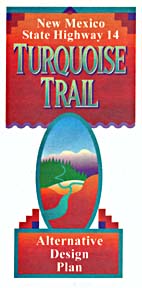
The AASHTO Roadside Design Guide, 'Chapter 10: Roadside Safety in Urban and/or Restricted Environments,' SPECIFICALLY mentions trees as a restricted environment, and offers approaches to the designer in providing roadside safety without removing the trees, rock outcrops. In Donal Simpson's "Alternative Design Plan" (p. 32 below) this is discussed.
The AASHTO Roadside Design Guide is a companion reference
to the AASHTO "Green Book," and presents a synthesis
of current information and operating practices related to roadside
safety. The roadside is defined as that area beyond the traveled
way (driving lanes) and the shoulder (if any) of the roadway
itself. The focus of the guide is on safety treatments that minimize
the likelihood of serious injuries when a driver does run off
the road.
The preface to the Roadside Design Guide emphasizes that it
"is a guide. It is not a standard or a design policy. It is intended for use as a resource document from which individual highway agencies can develop standards and policies. While much of the material in the guide can be considered universal in its application, there are several recommendations that are subjective in nature and may need modification to fit local conditions. However, it is important that significant deviations from the guide be based on operational experience and objective analysis."
Source: AASHTO Roadside Design Guide, "Preface," 1996
The AASHTO Roadside Design Guide recognizes that designers do not have a significant degree of control over roadside geometry and appurtenances in restricted environments:
"However, in many urban type or restricted conditions, the roadside environment (houses, businesses, trees, utility poles, signals, walkways, etc.) is already established to a high degree, and thus, the designer has the challenge of providing roadside safety given the many pre-existing constraints."
Source: AASHTO Roadside Design Guide, "Chapter 10: Roadside Safety in Urban and/or Restricted Environments", 1996
The AASHTO Roadside design Guide provides the following direction to designers in Restricted Environments:
"10.1 NEED FOR INDIVIDUAL STUDY OF SITES
"The clear roadside concept is still the goal of the designer; however, this is often not attainable and compromises may be necessary. The design options for treatment of fixed objects should be considered in each case; they are:
· Remove the obstacle or redesign it so it can be safely traversed.
· Relocate the obstacle to a point where it is less likely to be struck.
· Reduce impact severity by using an appropriate breakaway device.
· Redirect a vehicle by shielding the obstacle with a longitudinal traffic barrier and/or impact attenuater.
· Delineate the obstacle if the above alternatives are not appropriate.
"Engineering judgment will play an important part in the determination of improvements which can reasonably be made within the constraints of the urban roadside. To a greater extent than when designing for roadside safety for high-speed rural highways, EACH SITE IN A RESTRICTED ROAD ENVIRONMENT SHOULD BE INDIVIDUALLY STUDIED SINCE THE CONDITIONS AND CONCERNS MAY VARY GREATLY FROM SITE TO SITE. USING STANDARD APPROACHES MAY NOT BE THE MOST EFFECTIVE PROCESS. Designers should consider many alternatives to achieve a safe and balanced design. A key consideration is the presence or absence of other close-proximity objects, and the repetitive nature of such. A very important consideration is the driver's awareness of such constraints. In other words, how does the road environment "look" to the driver? It can be assumed that when drivers "feel" they have entered a more restrictive environment, they match it with a corresponding reduction in operating speed and/or increased attention to the driving task." [emphasis added]
Source: AASHTO Roadside Design Guide, "Chapter 10: Roadside Safety in Urban and/or Restricted Environments", 1996
The restricted environment of the Turquoise Trail1, in the section between Madrid and County Roads 44/45, is the result of right of way limitations caused by the roadside scenic features that must be protected to preserve the scenic qualities of the road. These include rock outcrops, hillsides adjacent to the roadway, densely vegetated arroyos, dry arroyos, roadside trees, and framed views of distant mountains, among others.